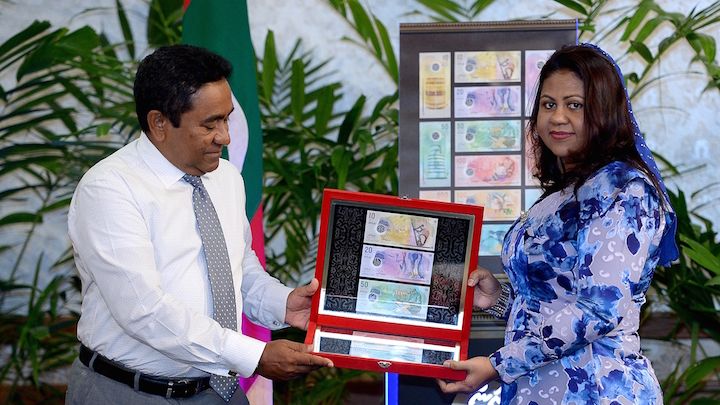New Maldives banknotes introduced into circulation
Following a launching ceremony at the president’s office, Dr Azeema Adam, the central bank’s governor, became the first to use the new banknotes for a purchase when she bought a papaya at the local market.

26 Jan 2016, 9:00 AM
The ‘Ran Dhihafaheh’ (Golden 50) new banknotes designed on the occasion of the Maldives’ golden jubilee of independence last year have been introduced into circulation across the country today.
The new series of the Maldivian Rufiyaa was launched by President Abdulla Yameen this morning. The Ran Dhihafaheh currency series – designed by local artist Abdulla Nashath and unveiled in November – replaces old notes introduced in 1983.
According to the Maldives Monetary Authority, the new banknotes are now available from banks and ATMs. The old series can be used as legal tender until March 31. The central bank expects to replace the old series within five years.
Following the launching ceremony at the president’s office, Dr Azeema Adam, the central bank’s governor, became the first to use the new banknote for a purchase when she bought a papaya at the local market.
Become a member
Get full access to our archive and personalise your experience.
Already a member?
Discussion
No comments yet. Be the first to share your thoughts!
No comments yet. Be the first to join the conversation!
Join the Conversation
Sign in to share your thoughts under an alias and take part in the discussion. Independent journalism thrives on open, respectful debate — your voice matters.




